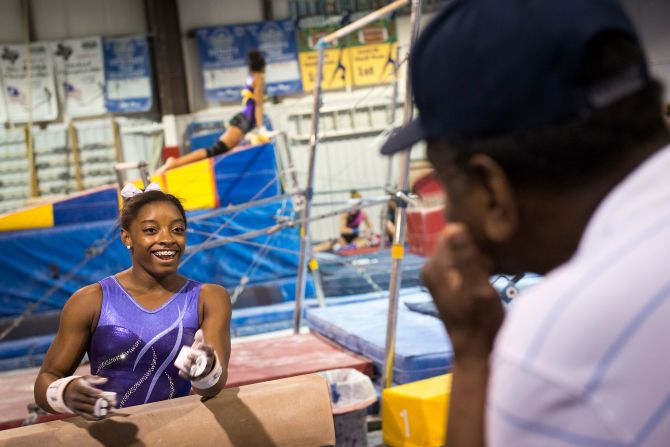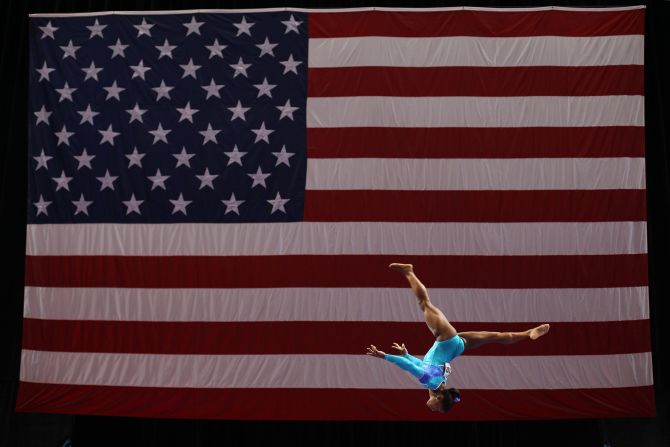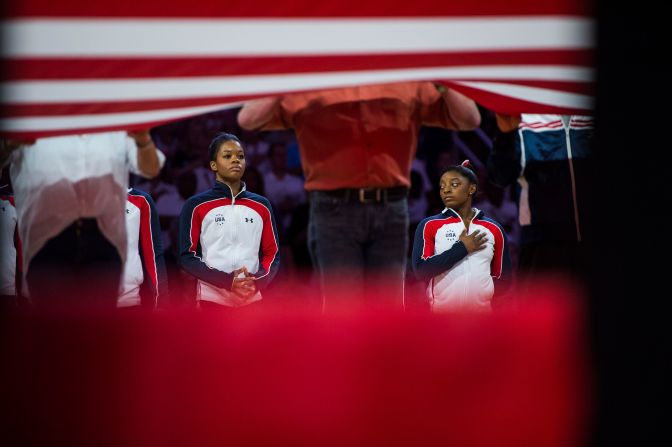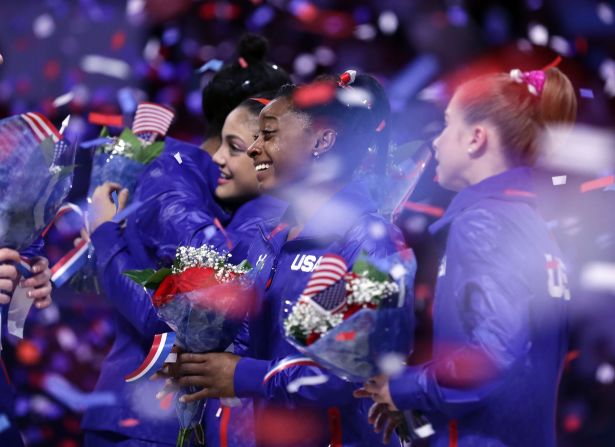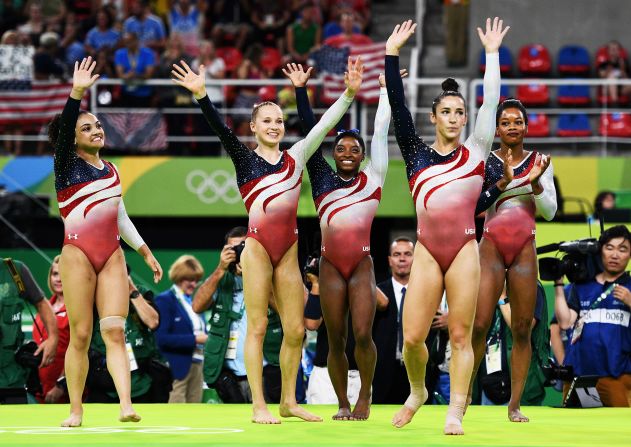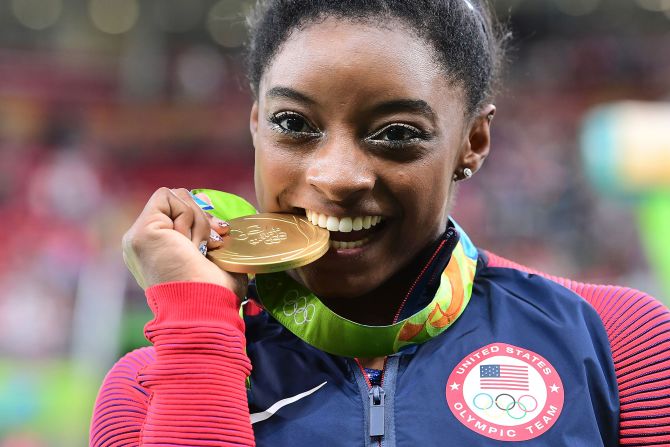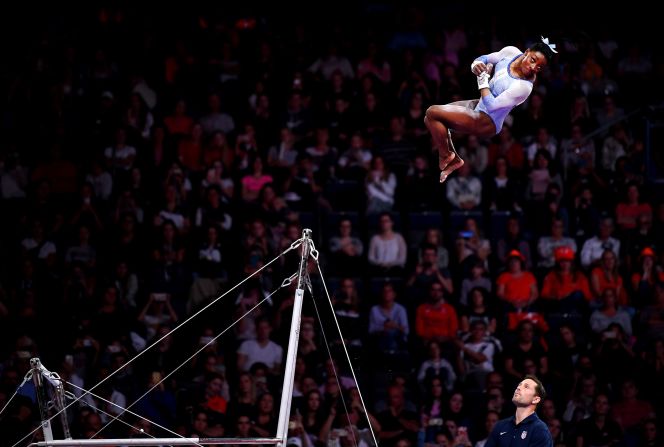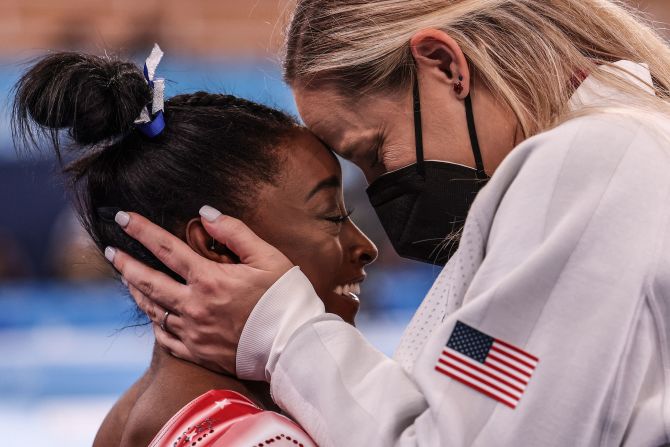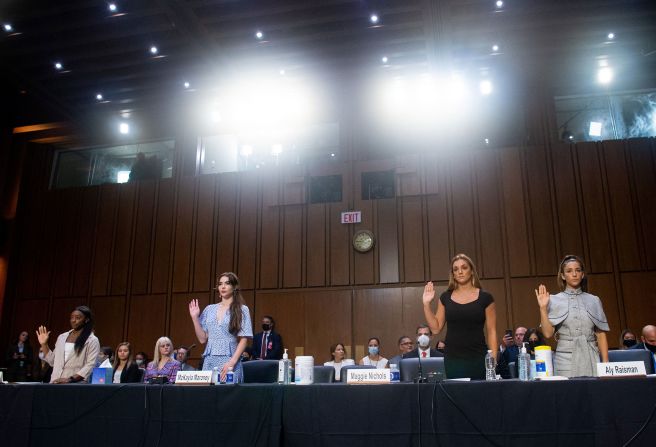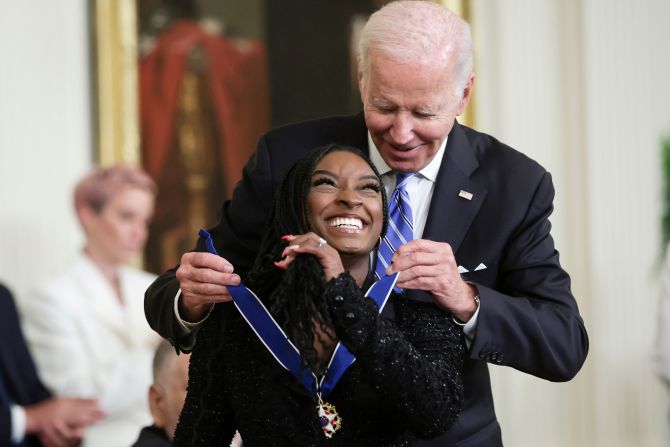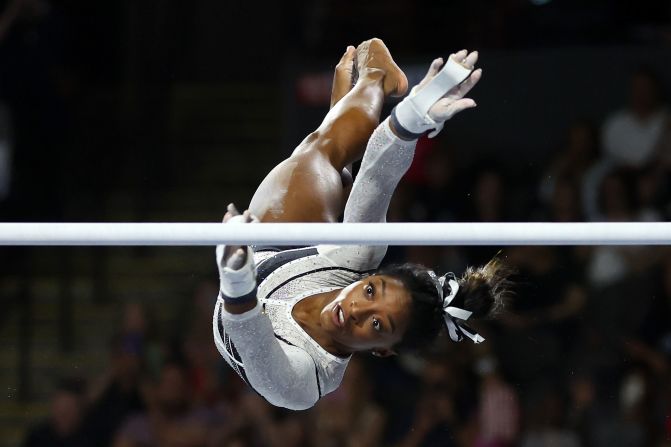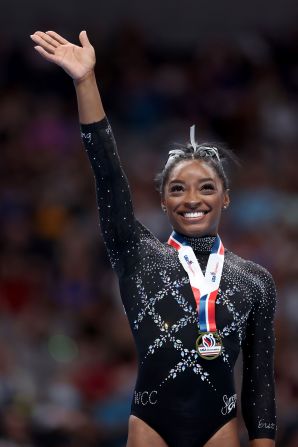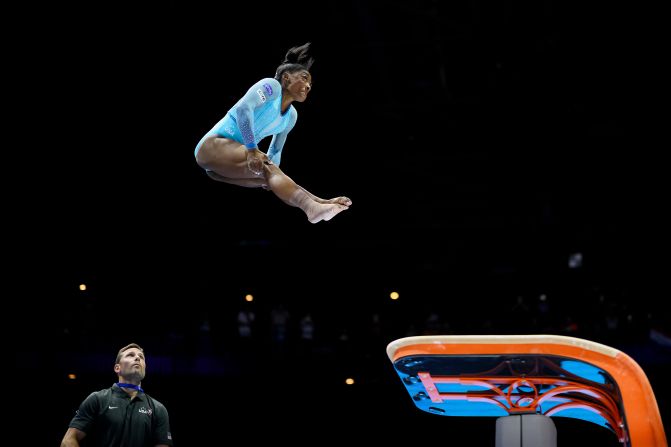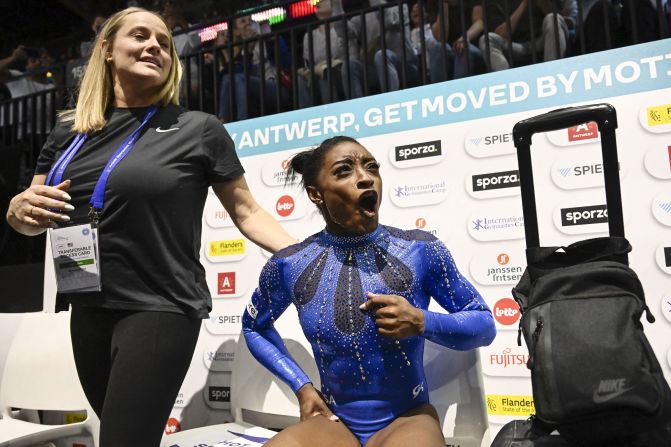Editor’s Note: Ella Donald is a journalist and academic from Brisbane, Australia. The views expressed here are hers. Read more opinion on CNN.
By now, the news that Simone Biles has won another championship and has gained two new skills named after her is about as surprising as the news that a competition occurred. Breaking even more barriers at the World Championships in Stuttgart, Germany, this week, becoming – with 24 medals so far at Worlds (and after winning the all-around competition with the largest margin ever) – the most decorated gymnast in history seems only what’s expected.

What a privilege it is for all of us who find Biles’ performances so thrilling to be able to talk about such brilliance so casually.
But even for an athlete who has risen to a rare level of public awareness (gymnastics is typically ignored unless it’s an Olympic year), her appearance in Stuttgart was met with an unusual amount of fanfare. You see, as Biles was preparing to make history once again, writing her two new skills into the record books by performing them in international competition, controversy was brewing. The governing body of gymnastics issued a ruling on the difficulty of Biles’ eponymous skills that paternalistically undercut elite athletes’ agency over their own bodies and turned a willfully blind eye to the changes in the sport that a new generation of gymnasts, led by Biles, has ushered in when it comes to what women can do.
Biles’s triple double (three twists, two flips, aka Biles II) on floor was passed by the governing body of world gymnastics as a J value skill – the highest degree of difficulty – without question, but the double double (two twists, two flips) dismount from beam was quickly reduced to an H.
Out of context, the two letter values seem minor – the J is worth a full point of difficulty, while the H carries 0.8 – but in fact symbolize a gulf of difficulty: on Twitter, a fan pointed out that Biles’ new skill was now only worth 0.1 points more than the commonly performed full-in (double tuck with a full twist). In a sport where the margin of victory is often razor-thin, the designation of difficulty carries enormous weight. In 2017, when Morgan Hurd, an underdog as a new competitor at the senior level, won the all-around title at World Championships, her victory was a mere 0.1 in front of Canadian Ellie Black.
The women’s technical committee of the Federation Internationale de Gymnastique (FIG), the sport’s governing body, said the downgrade in difficulty is to prevent gymnasts – predominantly from countries looking to break through on the world stage – from attempting the risky skill to bolster their score. “In assigning values to the new elements, the WTC (women’s technical committee) takes into consideration many different aspects; the risk, the safety of the gymnasts and the technical direction of the discipline,” they said in a statement. This is commonly seen with performances of the Produnova vault (front handspring onto the table, two front somersaults off), the hardest in gymnastics, known for its deadly potential:a slightly skewed run and launch can mean landing squarely on the neck. “I’m not trying to die,” Biles told the New Yorker when asked if she was going to attempt it.
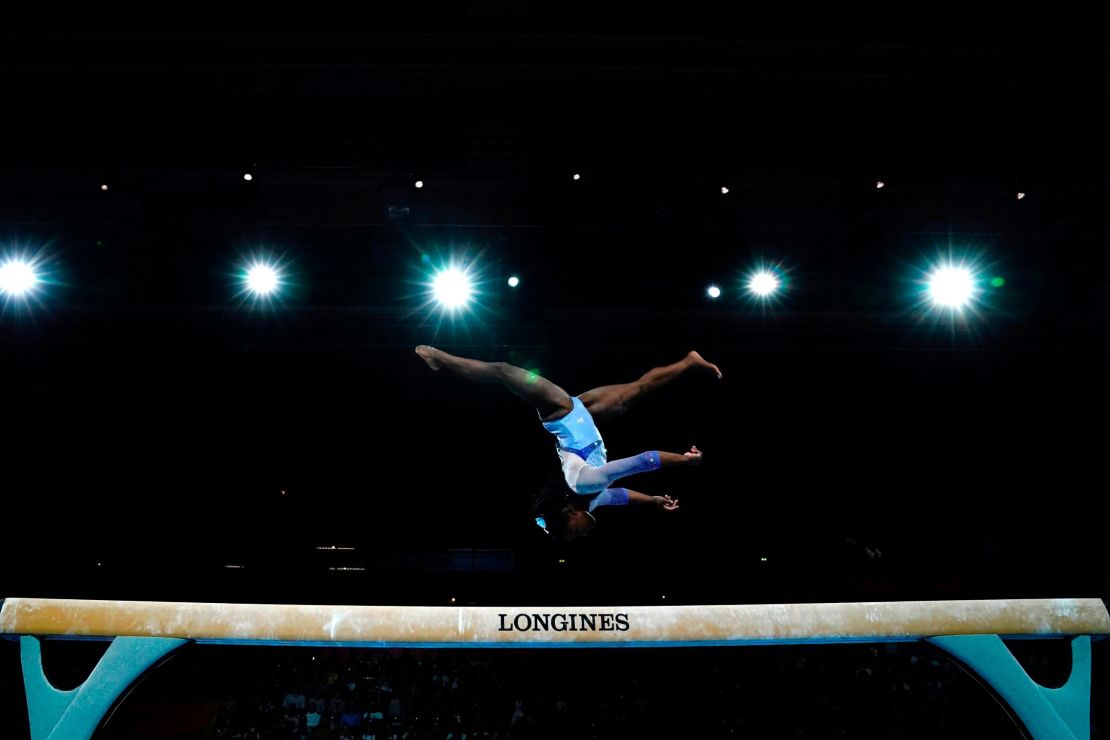
Indeed, gymnastics in 2019 is a sport that is continually being pushed to new heights, experimented with and liberated from the previously rigid ideas. To not adequately reward the work of someone like Biles, to blatantly disallow the greater boundary-pushing innovation and excitement that currently defines it, is to contradict the system as a whole. “They keep asking us to do more difficulty and to give more artistry, give more harder skills,” Biles told NBC after the decision about the triple double was made. “So we do, and then they don’t credit it, and I don’t think that’s fair.”
Quibbles over the double double may seem minor – after all, it’s a single skill. However, debates regarding an athlete having agency over their own body aside, the ruling on the new Biles move cuts to the heart of the sport. In 2006, the awarding of points was modified, changing from the so-called “perfect 10” system epitomized by legendary Romanian gymnast Nadia Comaneci (the first to earn that score), to an open-ended code.
Under the newer method, gymnasts are given a “D” (difficulty) and “E” (execution) score, respectively comprising the assigned values of what they perform, and the precision with which they perform it. The result is limitless potential for scores, and as a result, what can be achieved – internationally, the highest score ever awarded under this system was to Nastia Liukin (USA) and He Kexin (China) at the 2008 Olympics, where both scored 16.725 on uneven bars. Since both earned the same score from the A and B panels, judges looked to the E scores of the duo across the panel, and Liukin - with .033 more deductions – was eventually awarded the silver.
Introduced after judging errors at the 2004 Olympics, the open-ended system has come to symbolize a change in gymnastics - now, the game is difficulty and experimentation, pushing gymnasts to perform skills that can nudge scores a few tenths higher. Athletes are performing more awe-inspiring skills, whether a double back layout with a double twist on floor (aka Moors, named for the Canadian Olympian Victoria Moors) or Amanar on the vault. Mastery is now reserved for collegiate gymnastics, the only form of the sport that, at a senior level, retains the “10” system (the enduring excitement for which was recently on display when UCLA gymnast Katelyn Ohashi’s perfect-10-earning floor routine went mega-viral). On the international stage, less is not more.
It’s serendipitous that Biles came along at such a moment in the sport. An athlete seemingly made for the sky-is-the-limit design of the open-ended system, she’s able to balance demands for greater difficulty with safety. The prolonged fascination with her feats has helped her catapult gymnastics to a level of broader appeal and awareness not seen since the 1970s and 1980s of perfect scorers Nadia Comaneci and Mary Lou Retton.
It’s an electric time to witness in gymnastics, a welcome reminder of brilliance and possibility in the face of continued issues at USA Gymnastics. Each competitive appearance and new skill is met with a flurry of awed excitement and media attention, disbelieving at the imagined limits Biles continues to disregard. Biles’s sheer physical power – she has so much energy that she sometimes bounces out of bounds even after a long tumbling pass — projects for spectators around the world a feeling of boundless possibility.
For someone who gained boundary-pushing dominance in mere years, she’s also prudent and considered when it comes to taking risks, only adding difficulty when confident of safe performance. On Twitter, for instance, British Olympian and 2017 Worlds team bronze medalist Ruby Harrold said that FIG should allow warmups immediately prior to event finals. But at a deeper level, FIG’s treatment of Biles prompts a more existential question for the future of gymnastics and women’s sports. If the best in the world isn’t rewarded for her innovation in the sport, then who is?

